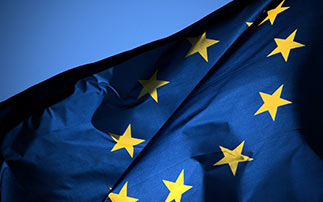“The European Maritime and Fisheries Fund (EMFF) is a key to ensuring proper implementation of the Common Fisheries Policy objectives. In the past its effectiveness was undermined by complex rules and red tape, but the Council is committed to make it a flexible and workable tool at the service of European fishermen” said Petre DAEA, Romanian Minister of Agriculture and Rural Development and President of the Council, during the ongoing negotiations at the EMFF Budget Council for the next period 2021-2027.
The EMFF: What is it?
The Common Fisheries Policy (CFP) sets out a series of rules to manage the European fishing fleet and conserve fish stocks through major areas of actions. The CFP is mainly financed through the EMFF, one of the 5 European Structural and Investment Funds (ESIF).
The EMFF thus aims to encourage innovative and competitive fishing. Under the ESIF partnership agreements between the European Commission and each Member State, a part of the total EMFF budget is allocated to each State proportionally to its fisheries and aquaculture sector size.
The EMFF 2014-2020: A modest budget and a minor use of funds
In the current 2014-2020 programming period, the EMFF has been the “financial youngest” of the ESIF. Indeed, with a budget of 6 billion euro, it was less well endowed than the ERDF (279 billion euro), the EAFRD (151 billion euro), the ESF (121 billion euro) and the Cohesion Fund (75 billion euro). Even if it targets a more specific area than its peers, its budget remains unambitious in terms of meeting the Fund’s priorities: the competitiveness of fisheries and aquaculture enterprises (3.6 billion euro within the EMFF budget), environmental protection and resources efficiency (3 billion euro), quality and sustainability of employment (830 million euro) and a low carbon economy (150 million euro).
As regards to funds distribution, the widest allocations are provided to the States having the largest coastlines and the main fishing and aquaculture industries, such as Spain (1.5 billion euro), Italy (980 million euro), France (774 million euro) and Poland (700 million euro).
While the EMFF budget is well below other structural funds, the main problem is related to the minor use of funds within States. In 2018, 40% of the resources were allocated, but only 18% of the annual budget has been actually spent to selected projects. This underutilisation issue affects all of the ESIFs, but the EMFF is the most affected.
However, many important projects have been launched, linked to the protection of Natura 2000 areas, blue growth or the development of new fisheries resources.
The EMFF 2021-2027: Which EU fisheries strategy?
The EMFF budget for 2021-2027 is the only one remaining unchanged, unlike the other structural funds for which the European Commission has proposed a reduction – except for the ERDF – in the negotiation of the multiannual financial framework context. Thus, the EMFF budget would reach 6 million euro for the same objectives as for 2014-2020.
However, there is a significant change: some changes could be made to the structure of the EMFF to make it more flexible. Indeed, the measures and eligibility rules would no longer be defined at EU level, but each State would draw up itself a specific action programme to its own territorial realities. This is intended to facilitate access to funds by simplifying the administrative process. Would this greater autonomy given to Member States and their regions be a solution to increase the use of funds and then effectively respond the issue of underutilisation?
Victor BONNOT




